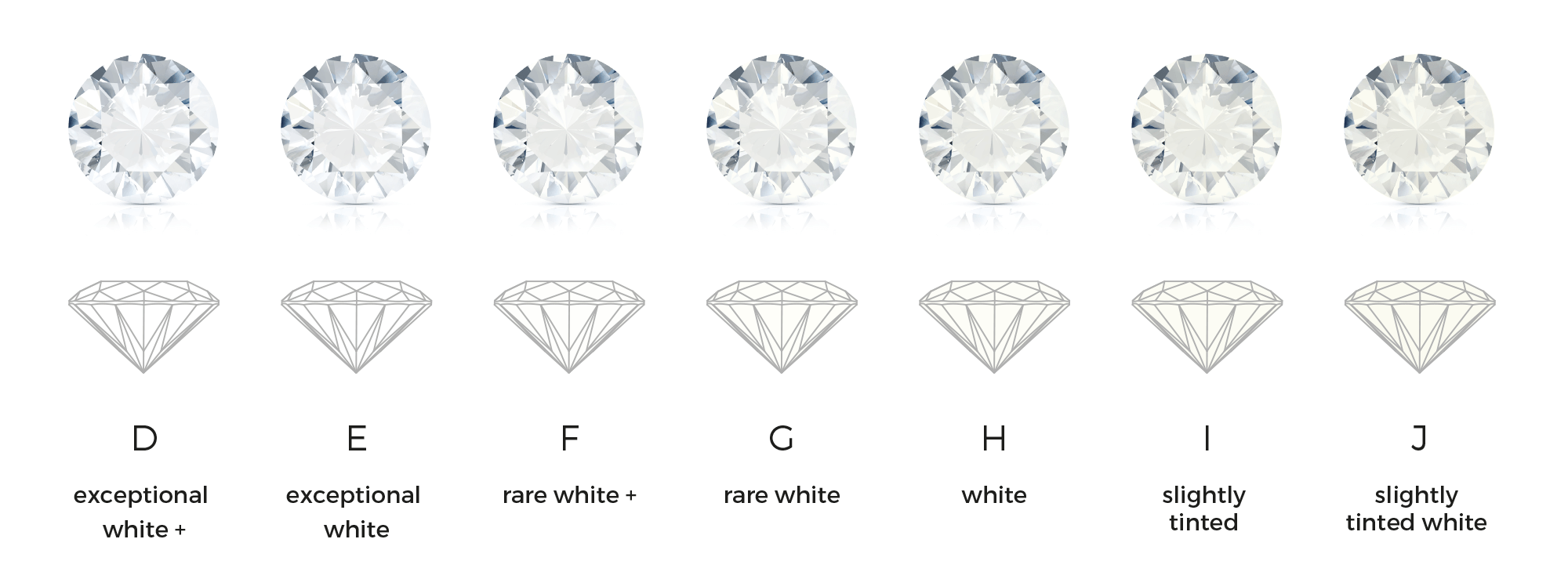
Diamond Color
What is diamond color?
A pure and “perfect” diamond with no chemical or physical inclusions is colorless and transparent. However, most diamonds tend to display certain tints, which are the result of chemical or physical inclusions in them that can give them certain lighter or stronger color hues.
What is the GIA diamond color grading scale?
The universally accepted and used GIA diamond color scale is an alphabetical scale that goes from D to Z and grades the color of colorless diamonds. The grades are as follows:
- Colorless – The D, E, and F grades
- Near Colorless – The G, H, I, and J grades
- Faint Color – The K, L, and M grades
- Very Light Color - N to R grades
- Light Color - S to Z grades
When it comes to jewelry use you’ll rarely find S to Z or even N to Z diamonds as most people look in the D to F or G to M color grades. In general, the less color there is in a colorless diamond, the more valuable and expensive it is, all else being equal.

How about colored diamonds?
The D-Z scale above is strictly for colorless diamonds, however, there are certain very rare natural diamonds that have much stronger color hues in them than a “colorless” Z-color diamond. These are the “Natural fancy colored diamonds”. Their color is so strong and intense that it stops being a drawback and becomes a feature. Colored diamonds can come in almost all colors of the rainbow including green, blue, yellow, orange, pink, purple, brown, black, and the rarest ones – red diamonds. These diamonds are generally very expensive and highly sought after.
How is diamond color affected by the diamond’s cut or carat size?
In general, the larger the carat size of the diamond, the more noticeable its color will be. In the same way, some cuts can mask a diamond’s color while others are good at retaining it. The round cut is excellent at hiding diamond color because of its intense facets and how it interacts with light. Other cuts such as the emerald and radiant cuts tend to show color clearly.
Is color a “bad” thing in diamonds and which color grade should you go for?
In general, with colorless diamonds, you want a stone with little to no noticeable color hues. With colored diamonds it’s the other way around – you want the color to be as noticeable as possible.
But if we stick to the more common colorless stones, while the D, E and F grades are the most valuable ones, you’ll usually find great bargains in the G-J range as they are much more affordable and still “near colorless”. Take each on a case by case basis depending on your specific requirements.
Plus, even when there is a barely noticeable and undesirable color hue, it can be compensated for with the right cut, ring setting, and ring color.
